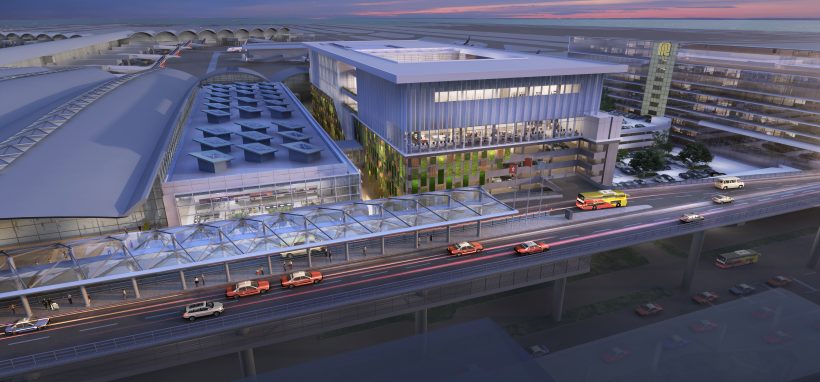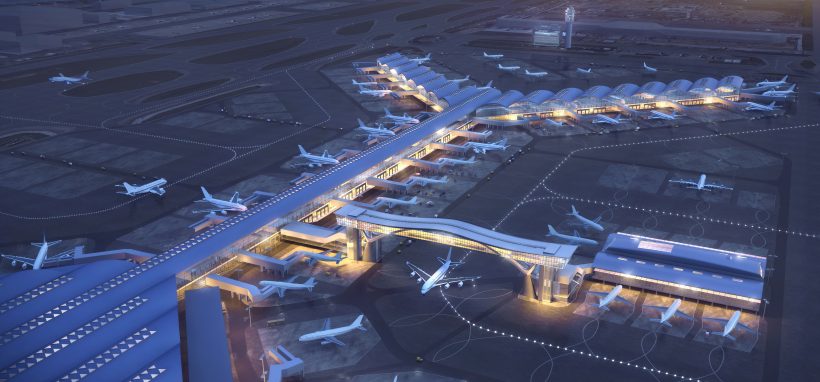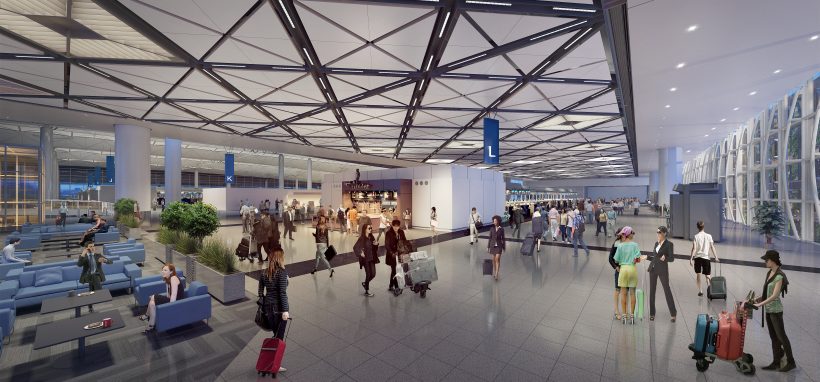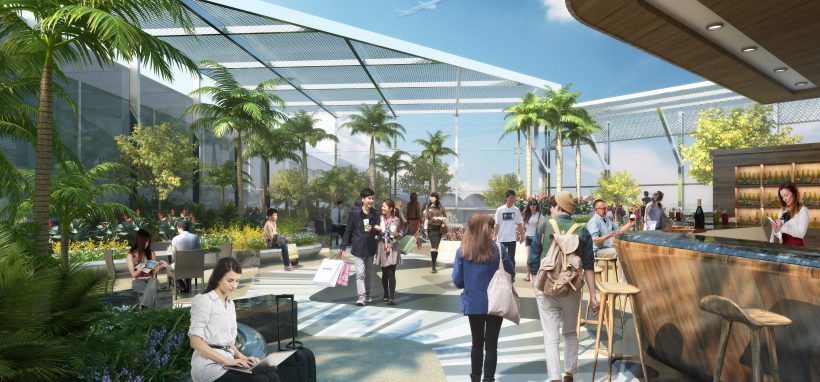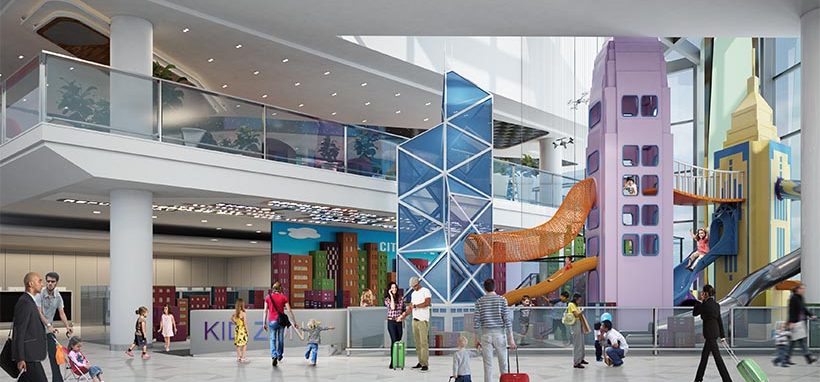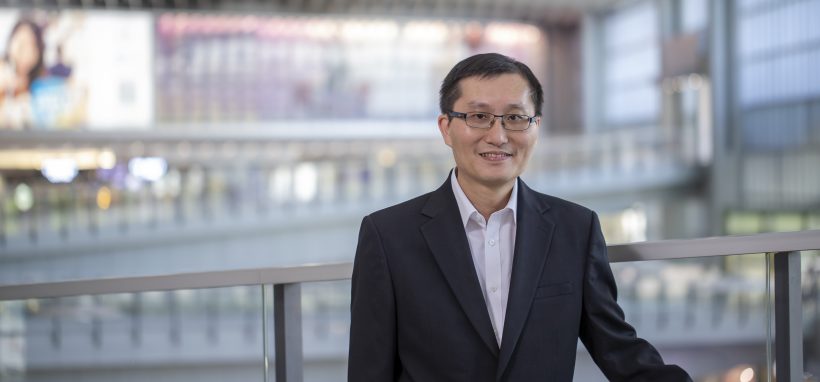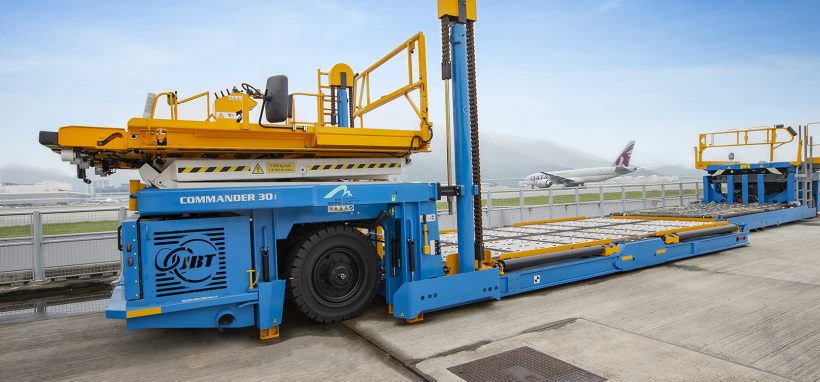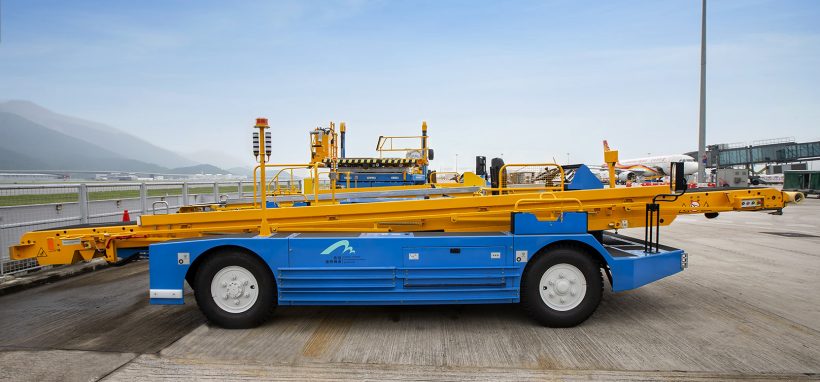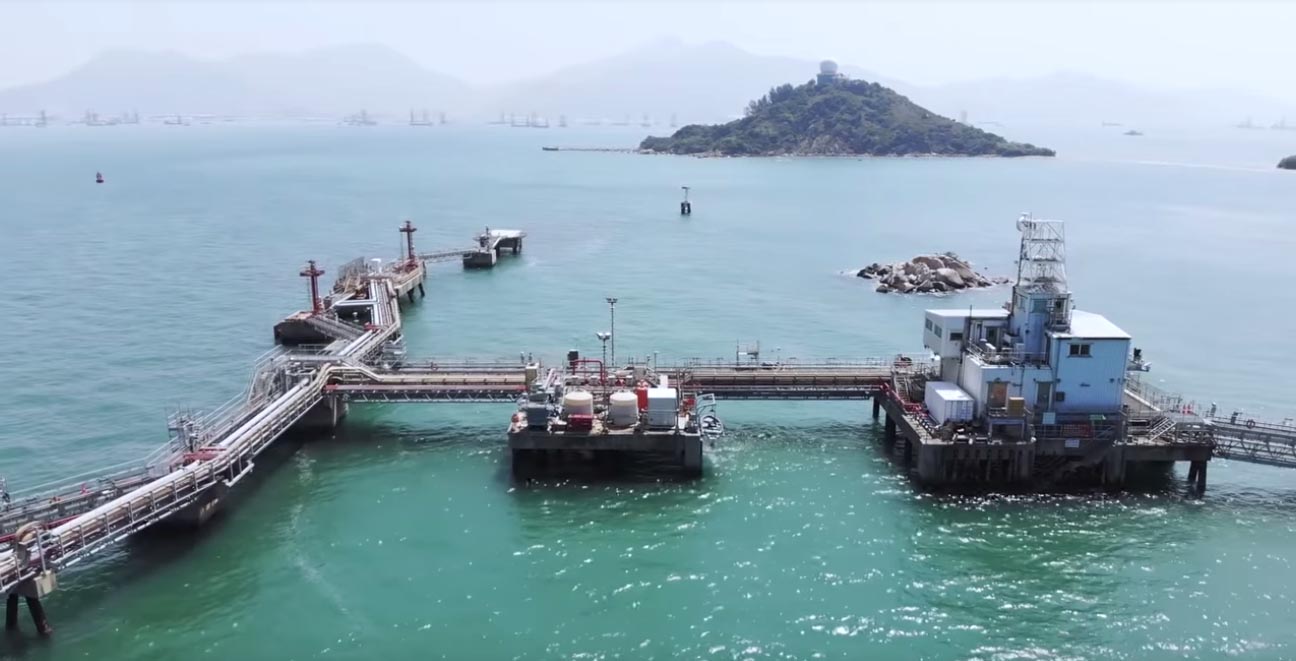Capacity Enhancement
HKIA achieved a record breaking year in 2017/18 as all three air traffic categories reached new highs. During the year, HKIA handled 73.6 million passengers and over 423,000 flight movements. Cargo and airmail increased to 5.1 million tonnes, making HKIA the world’s first airport to handle over 5 million tonnes in a year.
With global and especially regional demand for air travel steadily rising, we continually increase our capacity to meet future demand, while strengthening HKIA as an international aviation hub. Before the opening of the Three-runway System (3RS), we are enhancing the capacity of the existing two-runway system (2RS) through upgrading and expanding existing facilities and introducing advanced technologies and new processes.
1. Facilities expansion
- Midfield Apron Development – The remaining phase of the Midfield Apron Development will increase the number of parking positions from 182 to 215 in 2020. In 2017/18, 10 new parking positions were completed.
- Terminal 1 (T1) Enhancement Projects – AAHK is investing HK$7 billion into a series of major enhancement projects, which are expected to be completed in phases by 2020. These include the construction of the T1 Annex Building and Sky Bridge, and expansion of Car Park 4 building and T1 East Hall.
2. Initiatives to enhance operational efficiency
- Airport Collaborative Decision Making (A-CDM) – A real-time information-sharing platform that enables AAHK and our business partners to exchange timely and accurate scheduling data. It aims to enhance the airport’s efficiency and capacity utilisation by improving flight punctuality and reducing aircraft taxiing times. This has the added benefit of reducing the associated carbon and criteria pollutant emissions.
- Ground Services Equipment (GSE) Pooling Scheme – Initially implemented in mid-2018 at the Midfield Apron, the Scheme enables individual ramp handling operators (RHOs) servicing client airlines to rent critical GSE from AAHK.
- Reducing the runway maintenance window – To open up more takeoff and landing slots without compromising safety, we have deployed new and enhanced runway maintenance equipment together with optimised labour resources to reduce the night-time maintenance period by 15 minutes.
- Automation of Arrival Bags Delivery – Construction of a high speed baggage transport system linking the Midfield Concourse and Terminal 1. Due for completion in 2019, the new system will enhance baggage delivery efficiency and ease apron traffic congestion.
Q&A with Bill Lau, Assistant General Manager, Standards & Service Delivery
How was the GSE Pooling Scheme conceived?
“To cope with the increasing demand for air travel, we initiated a review of aircraft ramp handling processes which included an in-depth analysis of arrival baggage delivery performance. The findings revealed that timely provision of GSE is one of the most important factors affecting our service standards.
After careful consideration of various factors such as capital investment, stakeholders’ views, operational needs, and behavioural changes, the GSE Pooling Scheme was established to centralise the provision and management of shared-use GSE with the aim of creating new capacity and enhancing efficiency in aircraft turnaround handling.”
Can you tell us about HKIA’s GSE Pooling Scheme?
“In our GSE Pooling Scheme, AAHK procures, manages and maintains GSE such as conveyor belt loaders, lower deck loaders and passenger steps. These critical GSE will be stationed on each parking stand for rental by the RHOs. The Scheme is implemented in three phases. The first phase started in July 2018 and covers about 200 units of GSEs operating at the Midfield Apron. Under Phases 2 and 3, we will expand the coverage to include Terminal 1 Apron and eventually the rest of HKIA, including the future Third Runway Concourse Apron. When the Scheme is fully implemented in 2024, AAHK will own 1,000 units of GSE and become the world’s first international airport to adopt GSE pooling to such a scale.
We have also set up other facilities and systems to optimise the operation and management of our GSE fleet. With 95% of the GSE powered by electricity, we have installed chargers at every parking stand. Two dedicated GSE maintenance workshops are being built to facilitate speedy GSE servicing and reshuffling. We have also deployed a fleet management system to monitor the usage and performance of each GSE.”
What are the benefits of the Scheme for AAHK, business partners, and passengers?
“The Scheme enables maximising the utilisation of GSE and building in redundancy to cater for different operational needs without increasing the size of HKIA’s GSE fleet. This will hence reduce apron road traffic which is particularly important to HKIA for its saturated conditions. Since the launch of Phase 1, our key stakeholders have welcomed the change with the guaranteed availability of critical GSE on-stand, leading to enhanced efficiency in aircraft ramp handling processes.”
From a health and environmental perspective, local air quality is expected to improve as 95% of the GSE will be electric-powered and create zero local emissions.”
What is the major lesson you learned through this project?
“There are three RHOs operating at HKIA and they have different requirements on GSE. Early engagement with RHOs is crucial to ensuring the GSE to be procured and the arrangement of the Scheme are suitable for HKIA operations.
Airport operations often involve many different regulations, guidelines and procedures. However, we have to think out of the box and identify new solutions in order to maintain our high service standards.”
The 3RS project has made significant progress over the past three years. Details are available at our dedicated 3RS website. Major achievements in 2017/18 include:
1. Project implementation
- Deep cement mixing (DCM) works for critical reclamation and sea wall areas were substantially completed.
- Installation of two about 5.2km new aviation fuel pipelines connecting the Aviation Fuel Receiving Facility at Sha Chau with HKIA were completed in Q4 2017/18. This is the world’s longest pipeline installation using the environmentally friendly horizontal directional drilling (HDD) method.
- Construction for the Automated People Mover and high-speed Baggage Handling System for the 3RS commenced.
- Continued implementation of a comprehensive environmental monitoring and audit programme in accordance with the requirements set out in the 3RS Environmental Impact Assessment Report and Environmental Permit (EP). A dedicated website has been set up for reporting the environmental monitoring and audit data and other relevant information about the 3RS project.
Installation of Aviation Fuel Pipelines by Horizontal Directional Drilling
2. Stakeholder engagement
- More than 200 events, including briefings, seminars and airport tours were conducted in 2017/18 to engage the wider community.
Community Liaison Groups
- Islands, Kwai Tsing, Shatin, Tsuen Wan and Tuen Mun districts.
- 130 members include district councillors and community leaders (as of September 2018).
- Two rounds of meetings were held in 2017/18 covering the latest progress of the 3RS project and related environmental issues.
Professional Liaison Group
- 20 experts in different environmental fields (as of October 2018).
- Facilitate communications and enquiries on all environmental issues related to the 3RS.
- Two meetings were conducted in 2017/18 covering the latest progress of the 3RS project and the Marine Ecology and Fisheries Enhancement Strategy.

